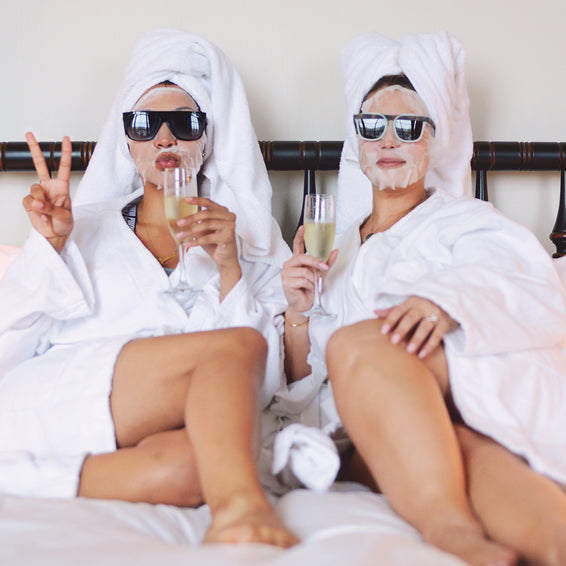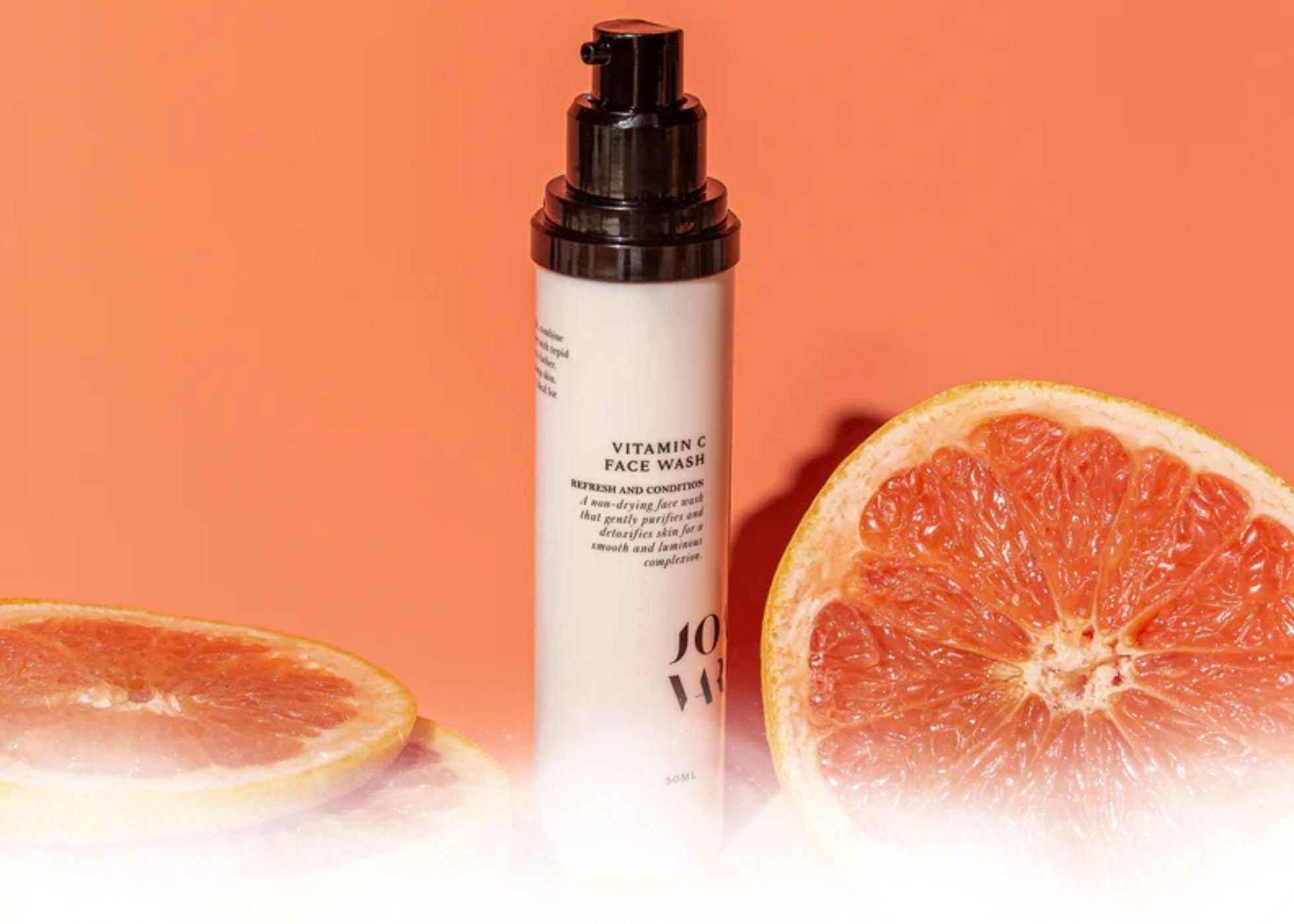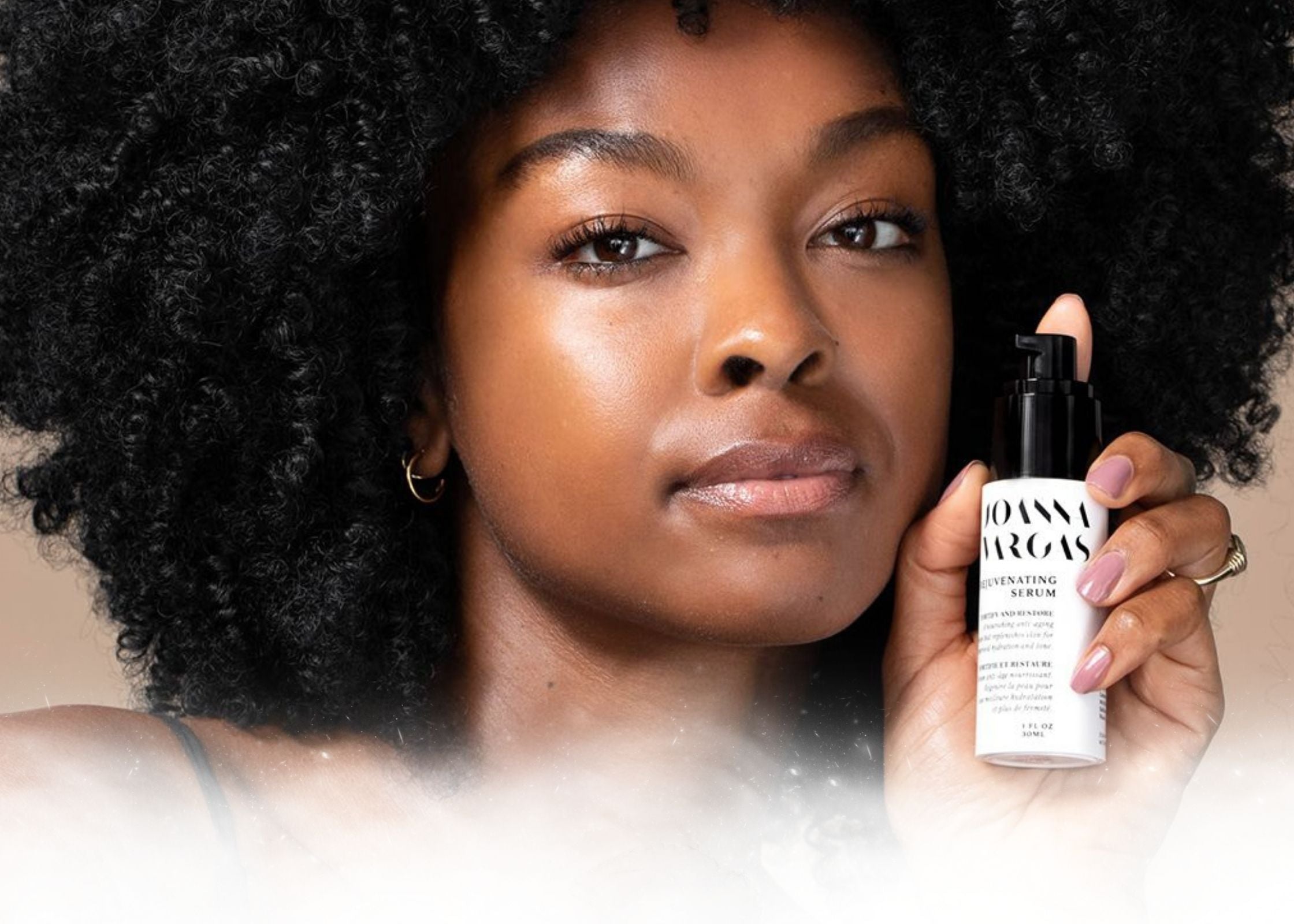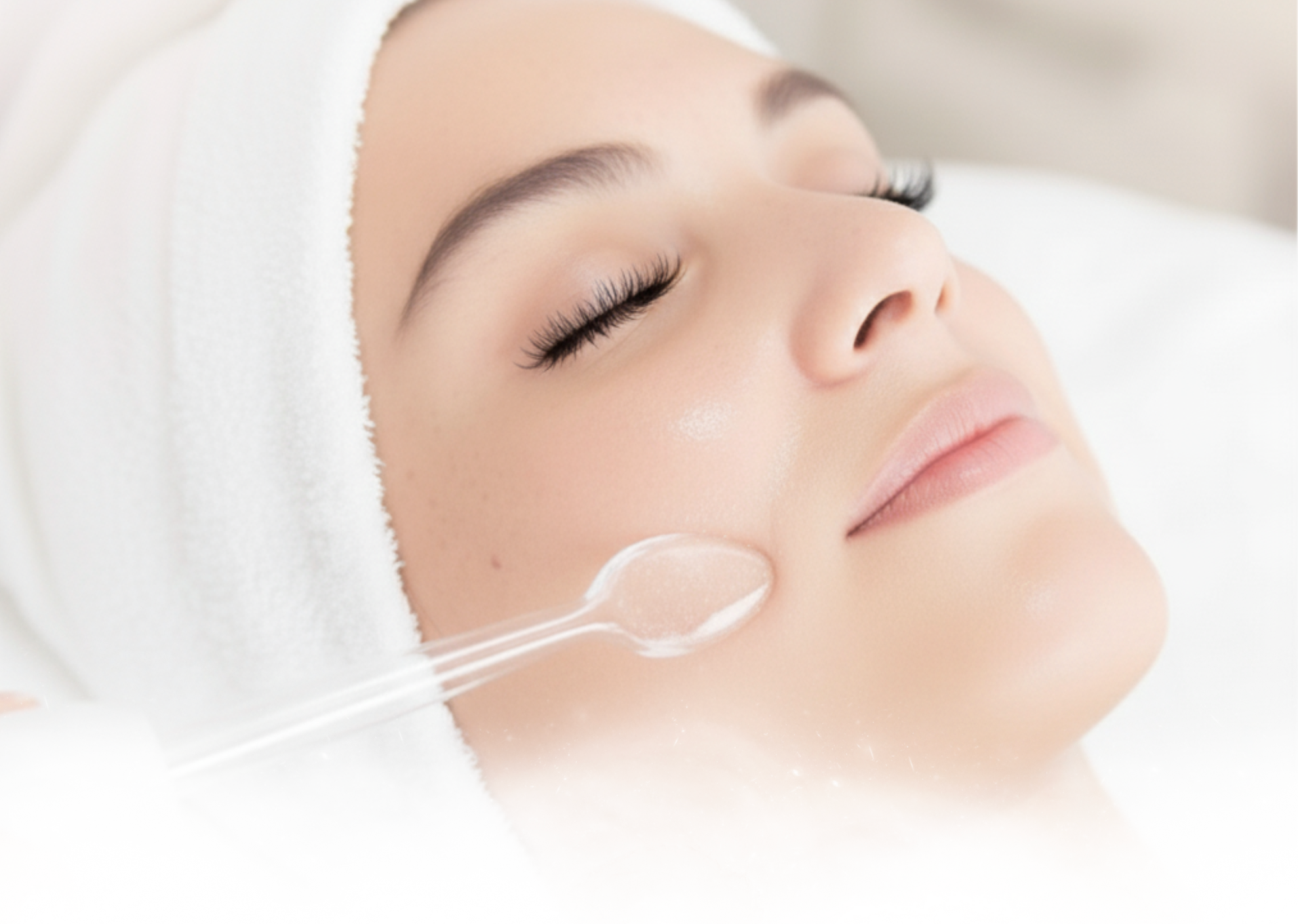How to Give Yourself a Spa-Level Facial at Home, According to Experts
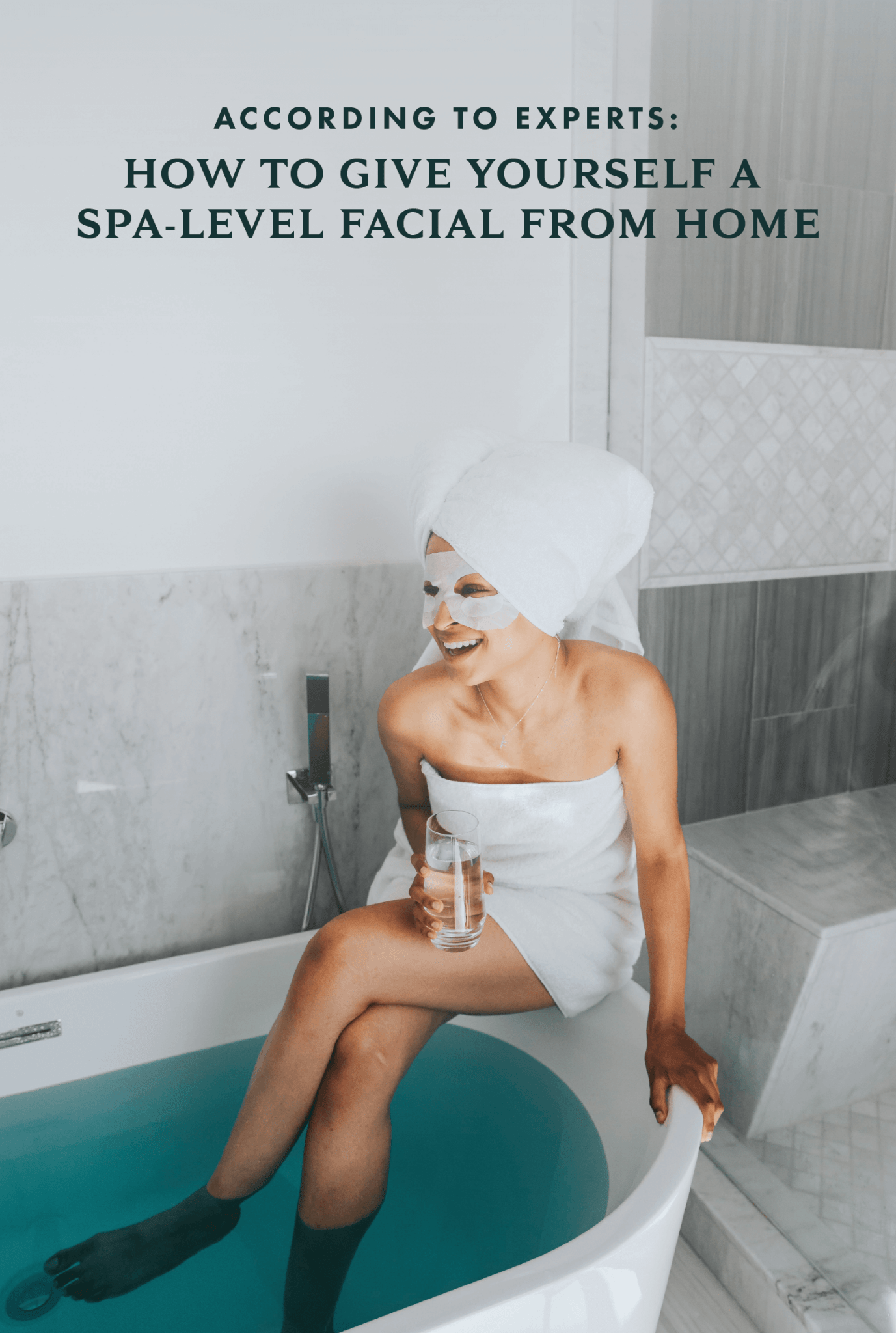
At-home beauty doesn't have to be hard. Welcome to House Calls, where we bring lessons from top dermatologists, stylists, and nail pros straight to your living room.
While we're all stuck indoors (or should be) for the foreseeable future, treating yourself to a much-deserved facial may seem like a far-off, unimaginable luxury — but that doesn't mean you shouldn't continue to care for your complexion. On the contrary, while the outside world continues to manifest constant feelings of anxiety, fear, and uncertainty, it's more important than ever to take care of your own mental health, and one of the best ways to do so, we'd argue, is by bringing a sense of the spa into your very own bathroom. Enter: the DIY facial.
Here's the lowdown on how to subscribe to Allure's print edition for more beauty routines, recommendations, and features.
Sure, you may not be able to properly emulate the perfectly positioned finger strokes of your favorite facialist or even turn your bathroom into a temporary oasis of aromatherapy with sounds of a distant seashore. But, according to some of the top aestheticians, you really can make your skin smoother and softer by re-creating a nearly professional experience at home.
That doesn't mean reaching for the gaggle of devices and products that have been hiding in the back of your medicine cabinet for months. Instead, pour yourself a nice, cold glass of cucumber water and follow these expert-approved steps for some serious self-pampering.
With any type of facial, the first step should always be to cleanse in order to prep the skin and "start with a clean palette," says facialist Joanna Vargas, who has salons in Los Angeles and New York City.
Aesthetician Georgia Louise recommends beginning an at-home facial with a double cleanse. Start with an oil-based cleanser to melt away makeup and remove unwanted, dead skin cells while still keeping the lipid barrier intact, Louise says.
Next, choose either a foam- or cream-based cleanser. "Creams are more gentle, so they’re technically [better] for anyone who has sensitized skin," Vargas says. "Foam [cleansers] usually keep pores cleaner."
Rinse off the oil-based cleanser using a warm washcloth and proceed with either a cream or gel cleanser. "Focus on areas of oil and congestion and massage really well into all the nooks and crannies of the skin," Louise says.
After cleansing, it's time to exfoliate, or slough off the top layer of skin cells and excess oils in order to ensure that the ingredients penetrate and you get the most out of the other steps, Vargas says. Depending on your skin type, you can either go the physical or chemical exfoliant route. If the former, facialist Vicki Morav recommends using an enzyme-based powder that exfoliates without abrading it to leave skin polished and super clean.
A few of our favorites include Tatcha's The Rice Polish, AmorePacific Treatment Enzyme Peel Cleansing Powder, and MBR Enzyme Cleansing Booster.
If you're more of a face-scrub fan, some Allure favorites include Acure's Brightening Facial Scrub, Clinique's best-selling Exfoliating Scrub, and 2019 Best of Beauty Award-winning Paula's Choice The UnScrub.
If you prefer to exfoliate using a liquid formula, Louise suggests swiping on one that contains a blend of chemical exfoliants such as alpha hydroxy acids (AHAs) and beta hydroxy acids (BHAs). She also cautions not to go overboard on this step as there are still many more to go and over-exfoliation can cause damage to the skin's protective lipid barrier.
Aesthetician Sofie Pavitt agrees. "I recommend keeping your acid exfoliation to just one product within a routine," she says. "By doing this, you're not going to overdo it and strip the skin's moisture barrier."
Some top chemical exfoliant picks include fan favorite Biologique Recherche Lotion P50, Georgia Louise's pH Perfecting Tonic, and CosRx AHA/BHA Clarifying Treatment Toner.
Choose your face mask based on whatever current issues your skin is facing. If it is oily and prone to breakouts, reach for one that is clay-based or contains vitamin C. Conversely, if it feels parched or generally dry, use a face mask that is formulated to replenish hydration; Vargas recommends seeking out ingredients like hyaluronic acid and vitamin B5.
For smoothing lines, Vargas suggests using a face mask that's formulated with peptides and antioxidants. The bottom line on face masks is to treat whatever issue you have going on, Vargas says. Some of the most common conditions she treats with masks include dehydration, dullness, sensitivity, breakouts or oiliness, lack of firmness, and sun damage.
For oily, acne-prone skin, two of our favorite clay face masks are the Dr. Dennis Gross DRx Blemish Solutions Clarifying Mask with Colloidal Sulfur, formulated with bentonite and kaolin clays, and the 2019 Best of Beauty-winning VENeffect Skin Calming Mask, made with pink clay.
If hydration is your primary masking goal, try Eve Lom's Moisture Mask, Kiehl's Calendula & Aloe Soothing Hydration Masque, or one of our favorite (and Best of Beauty-winning) hydrating sheet masks, Mamonde Flower Lab Essence Sheet Mask.
Or, if you've got a semi-stocked pantry and some time to kill, you can consider whipping up a treatment of your own.
If you're prone to redness, aesthetician Joanna Czech suggests mixing uncooked, ground oatmeal and flaxseed in a 1:1 ratio, then adding just enough water to make a paste. Let it cool, then apply and allow to sit for 30 minutes.
For instant brightening, grab an egg and a tablespoon of plain Greek yogurt. Whip up the egg white until frothy, then add yogurt. Leave the mixture on for 15 minutes to reveal the appearance of tighter pores (courtesy of the albumen in egg whites) and a brighter complexion (from the lactic acid in yogurt), says Shani Darden, a Los Angeles-based aesthetician.
And if hydration is your goal, a half-cup plain Greek yogurt mixed with half an avocado and a quarter cup honey can do wonders, says Vargas.
"Fill a bowl [with] hot water and position your face over the bowl with a towel over your head to let your skin 'open up' while masking," Louise recommends, noting that you don’t need a fancy at-home device in order to reap the benefits of steaming. "A good old-fashioned bowl with slices of oranges will do a fantastic job of softening the skin and opening the pores."
After removing your face mask of choice, Morav says it's time to layer on your favorite serums and moisturizer — with the overall goal being hydration. Some of our favorite hydrating facial serums include La Roche-Posay Hyalu B5 Pure Hyaluronic Acid Face Serum, Caudalie Vinosource SOS Deep Hydration Serum, and SkinCeuticals H. A. Intensifier.
Following serum, apply a layer of your favorite moisturizer. For an ultra-luxurious option, we love SK-II's R.N.A. Power Radical New Age Cream (so much so, that we gave it a 2019 Best of Beauty Award).
After applying as many hydrating products as you like (working from thinnest to thickest), give yourself a facial massage to boost blood circulation and lymphatic drainage. "It is important to use very hydrating, rich ingredients as the skin is massaged," Morav says. To give yourself a top-notch facial massage, begin at the chin and gently stroke outwards, Louise suggests. Follow a similar pattern on all areas of the face, including often-neglected spots like behind the ear lobes, around your nostrils, and the center of your forehead.
You can use your fingers, a roller, or a gua sha tool — whatever you have on hand — just as long as you don't push too hard. "Don't bruise yourself," Louise says. "The idea is to go really lightly and focus on draining versus rubbing."
"We are surrounded by so much noise of all sorts, so I find it really important to create an ambiance for oneself," says Morav, whose own spa-like set-up at home includes an essential oil diffuser, candles, music, and crystals. Once all the hard work of cleansing, exfoliating, and masking is over and you're in the midst of a gentle facial massage, Louise also suggests that it might be the right time to light a candle, play some calming music, and give yourself some "lymphatic love."
Vargas likes to do an at-home facial while soaking in the bathtub because "it feels super luxe," adding that "music is a must."
"I always say I don't play raindrops," says Czech, who has Pink Floyd, Dolly Parton, and Van Morrison on playlists at her New York City and Dallas studios.
Bottom line: Create a spa-like vibe using whatever makes you feel calm, whether it be music, candles, crystals, essential oils, or all of the above.
There are certain aspects of a professional facial that are always best left to the professionals. Topping that list is extractions, which, tempting as they may be, can lead to scarring and worsen inflammation associated with a breakout, explains board-certified dermatologist Marisa Garshick. "In this time, when we want to be especially mindful about keeping our hands off our face, you don't want to transfer any germs from your hands to your face and lead to any type of infection," she says.
Also on the list of DIY no-no's are certain devices, or rather, a combination of them. If you'd like to incorporate a device — whether a microneedling roller, an LED light, or a microcurrent device — limit yourself to one per facial. "Various devices, when used at home, can lead to potential injury to the skin, make the skin worse, or lead to scarring," Garshick says.


